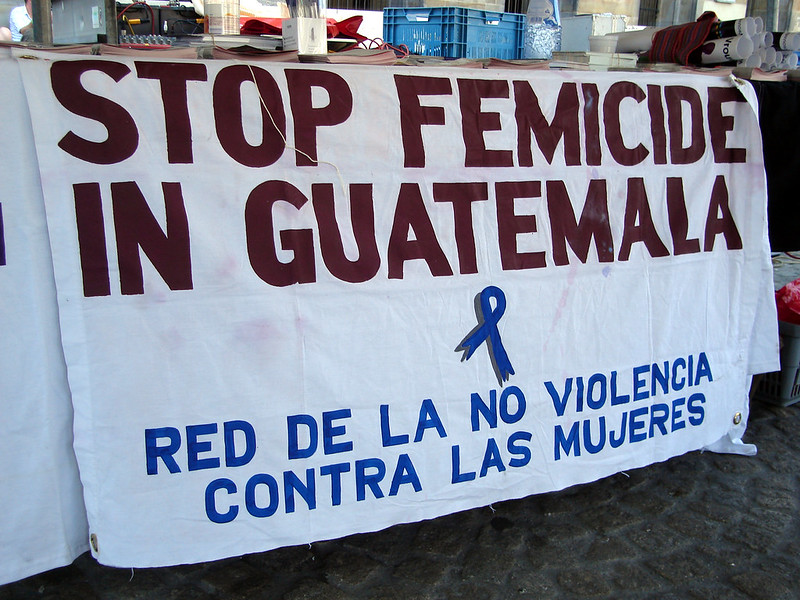
On October 11, I attended an information session at NYU called “Textures of Terror: Femicide and Impunity in Guatemala,” led by anthropologist Victoria Sanford. The presentation described the dark reality regarding the nature of human rights that citizens, especially women, face due to a corrupt governing system in Guatemala.
Sanford’s main argument was that the human rights crisis in Guatemala is a result of a structural issue, not a cultural one. She discussed the linguistics used to describe the situation and how they are not sufficient enough to explain the severity of issues, such as femicide—the murder of women by men motivated by societal gender roles and norms, gender inequality, or discrimination. Guatemalan government officials have been using language to misrepresent the reality about these crimes, often attributing issues related to gender violence to culture to obscure their institutional failures.
This misrepresentation of language used to describe the current humanitarian state in Guatemala has confused legal, political and military terms with one another. Sanford argued how uses of language like “genocide” and “ethnic cleansing” have been used to describe the violence against Guatemalan citizens. While “genocide” is a legal term, “ethnic cleansing” is a political term that perpetrators use and originates from U.S. training and declassified documents. Similarly, the phrase “sweep through,” a military term, has also been used to describe ethnic cleansing.
According to the UN, international law has not yet labeled ethnic cleansing as a crime itself. If ethnic cleansing which includes a multitude of acts, such as murder, rape and sexual assault, does this mean that the murder, rape and sexual assault of women by men—femicide—in Guatemala is not being recognized as a crime too? These technicalities, while easily overlooked, are extremely important in determining institutional accountability.
Sanford also discussed how the word “femicide” has been used to describe the crime of men killing women and also hate of women for their gender. Although femicide can describe the killing of women, especially marginalized women, this word without context may leave others to think of this crisis as one born out of cultural stereotypes. Instead, femicide should be explicitly defined as the systematic enabling of the killing of women by men. Guatemalan institutions such as the police must be held accountable for the “structural responsibility of the state for the conditions that exist,” as they have provided little support on the issue. Rather, the police—with assistance from the Guatemalan military—have been facilitating human rights violations through their inactivity.
Another phrase used to describe femicide in Guatemala is “culture or terror.” This phrase has strategically used culture to normalize terror, violence, and fear in every life. Such a notion questions “whether the terrorized are implicated in sustaining violence as a way of life,” as scholar Jane A. Margold puts it, which reinforces the idea that stereotypes concerning violence in communities are something victims have subjected themselves to.
The phrase has been used to describe Guatemalan society by claiming violence has been used as a tool to maintain a certain socio-political standard by the people, normalizing violence in Guatemalan cultural identity. There are dangerous implications with this phrase, as it attributes the terror inflicted on women as a product of Guatemalan society. This phrasing shifts attention away from corrupt institutional activities, such as the granting of impunity to men in Guatemala, which was at a staggering high of 98 percent in 2008 and 87 percent in 2016.
When we hear discourse attributing violence to cultural norms, it’s important to consider what strategic motivations lie behind it. It is clear that violence in post-war Guatemala is a result of systemic issues found within its corrupt government, which has been blaming humanitarian crises on criminal groups and gangs rather than the structural instability they have left unaddressed at the cost of their people. Looking toward the language surrounding gender violence in Guatemala exposes the urgent need to redirect attention towards institutional accountability, not dangerous myths about its culture.



